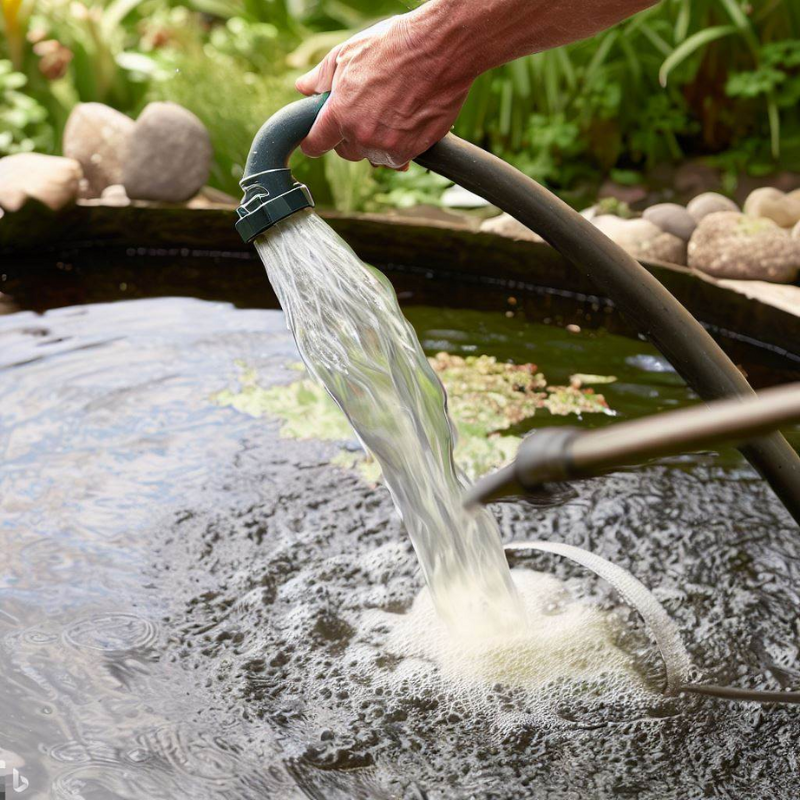Next working day delivery with Royal Mail Tracked 24
Can I top my pond up using a hose pipe?

Can I top my pond up using a hose pipe?
It is perfectly safe to top up a garden pond using a hose pipe, but there are some important things to consider before doing so.
Chlorine and Chloramine
Tap water typically contains chlorine and chloramine, which is designed to rid water of bacteria and can be harmful to organics, like pond fish and plants.
Before topping up using a hose pipe or tap water, always use a 'tap safe' or dechlorinator product to remove the chlorine. Mixing the correct dose of dechlorinator chemical with some water in a watering can prior to adding is a good method. Remember to add only enough dechlorinator to neutralize the top-up amount, and not the complete volume of the pond.
It is often believed that leaving water to sit for a period (24hrs) allows the chlorine and chloramine to 'gas off' or evaporate, but this only applies to chlorine - chloramine will still remain using this method.
Chloramine cannot be easily removed from water via evaporation and must be neutralized using a dechlorinator. Alternatively, consider using rainwater to fill your pond, as it is free of these chemicals.
The most direct way to determine if both chlorine and chloramine is in your tap water is to contact your water company and ask what they use to treat the municipal water supply. By law, they must make the composition of your tap water available to you.

Temperature of the Water
You must consider the temperature of the water coming direct from the tap. Adding cold water from a hose pipe will cause a sudden drop in your pond's water temperature, which can be stressful for fish and plants.
If the water is cold, add it to the pond slowly, allowing it to mix gradually with the existing pond water and adjust to the ambient temperature. This method will ensure the ponds organic inhabitants adapt quickly and are not harmed by the process. Use a pond thermometer to monitor the temperature of your pond.

Water Quality and Parameters
Ensuring the chemical balance is safe in your pond is essential for keeping water clear and allowing wildlife to thrive. Testing your pond's water quality after topping up is wise, as tap water not only contains chlorine that may kill good bacteria and other organics, but may also contain high levels of nutrients that can contribute to algae growth.
Purchase a pond test kit to monitor the levels of chlorine, ammonia, nitrite, and nitrate, and take appropriate action if necessary. This will also help determine whether you are using the correct dosage of dechlorinator in your pond.

Pond Overflowing
Be careful not to overfill the pond, or this could lead to problems such as fish escaping, filtration systems overflowing or struggling, and waterlogged plants. It may also introduce debris from around your pond into the ecosystem as the water recedes.
Hosepipe Bans
According to the Water Use (Temporary Bans) Order in the UK, when a hosepipe ban is in place people are forbidden from using a hosepipe to fill a pond. However, there are some exceptions. If you have a pond with fish in it and it is unavoidable for the welfare of the fish, you are allowed to use a hosepipe to top it up.

To browse our range of dechlorinators for ponds please click here.
To browse our range of dechlorinating tap safe for aquariums please click here.
Data correct as of 05/06/2023
Photo credit(s): Canva Pro Licence / Bing Chat AI
















